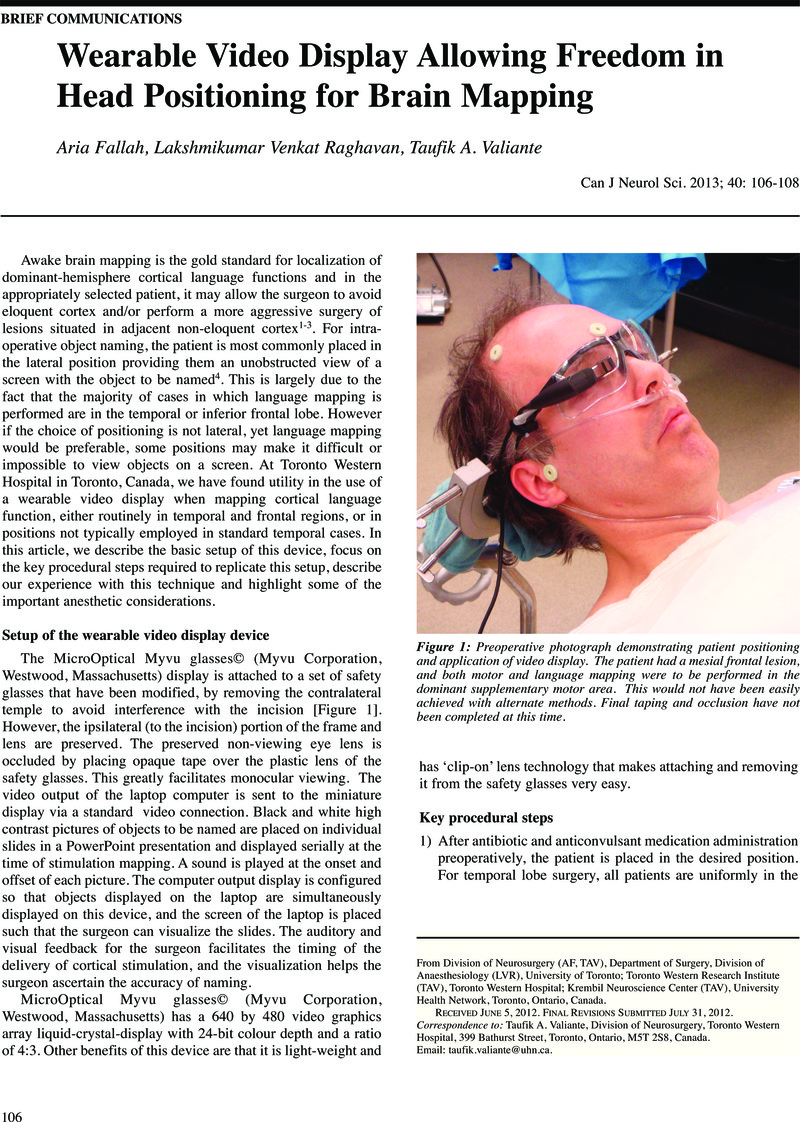No CrossRef data available.
Article contents
Wearable Video Display Allowing Freedom in Head Positioning for Brain Mapping
Published online by Cambridge University Press: 23 September 2014
Abstract
An abstract is not available for this content so a preview has been provided. As you have access to this content, a full PDF is available via the ‘Save PDF’ action button.

- Type
- Brief Communications
- Information
- Copyright
- Copyright © The Canadian Journal of Neurological 2013
References
1.
Berger, MS.
Minimalism through intraoperative functional mapping. Clin Neurosurg. 1996;43:324–37.Google Scholar
2.
Duffau, H, Lopes, M, Arthuis, F, et al.
Contribution of intraoperative electrical stimulations in surgery of low grade gliomas: a comparative study between two series without (1985–96) and with (1996–2003) functional mapping in the same institution. J Neurol Neurosurg Psychiatry. 2005 Jun;76(6):845–51.Google Scholar
3.
Serletis, D, Bernstein, M.
Prospective study of awake craniotomy used routinely and nonselectively for supratentorial tumors. J Neurosurg. 2007 Jul;107(1):1–6.Google Scholar
4.
Pilcher, WH, Ojemann, GA.
Presurgical evaluation and epilepsy surgery. New York: Churchill Livingstone; 1993.Google Scholar
5.
Taylor, MD, Bernstein, M.
Awake craniotomy with brain mapping as the routine surgical approach to treating patients with supratentorial intraaxial tumors: a prospective trial of 200 cases. J Neurosurg. 1999 Jan;90(1):35–41.Google Scholar




